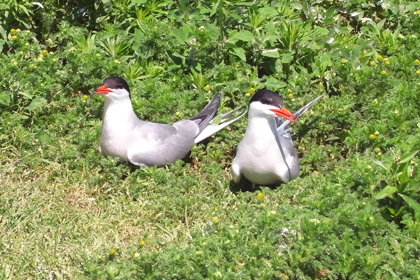Winter is finally here and while, for most, thoughts of summer days and breeding birds have been replaced with visions of snow and snuggling by the fire, biologists at Penn State University are working with Park Staff and many others to prepare for another year of research at Presqu'ile.
For the past 3 years, Drs. Jennifer Arnold and Stephen Oswald have spent the summers at Presqu'ile studying nesting terns and gulls. They are particularly concerned about the smallest of the four colonial waterbird species that breed on Gull Island: the common tern.

Historical records suggest much larger breeding numbers at Presqu'ile and recent data from Canadian Wildlife Service indicate that this species has declined by more than 40% in the Canadian Great Lakes over the past 30 years. The small colony at Presqu'ile (about 100 breeding pairs) represents one of the last natural breeding sites for terns in the Lower Great Lakes Region.
To help with regional and local management of breeding waterbirds, Arnold and Oswald seek to understand the factors that influence breeding success and failure for terns and gulls at Presqu'ile. They are assessing ways in which breeding habitat can be improved for Presqu'ile's terns and uncovering ecological differences between declining freshwater breeding common terns and more stable populations found on the Atlantic coast. They hope that the comparative work will help to explain differences in population trends.



